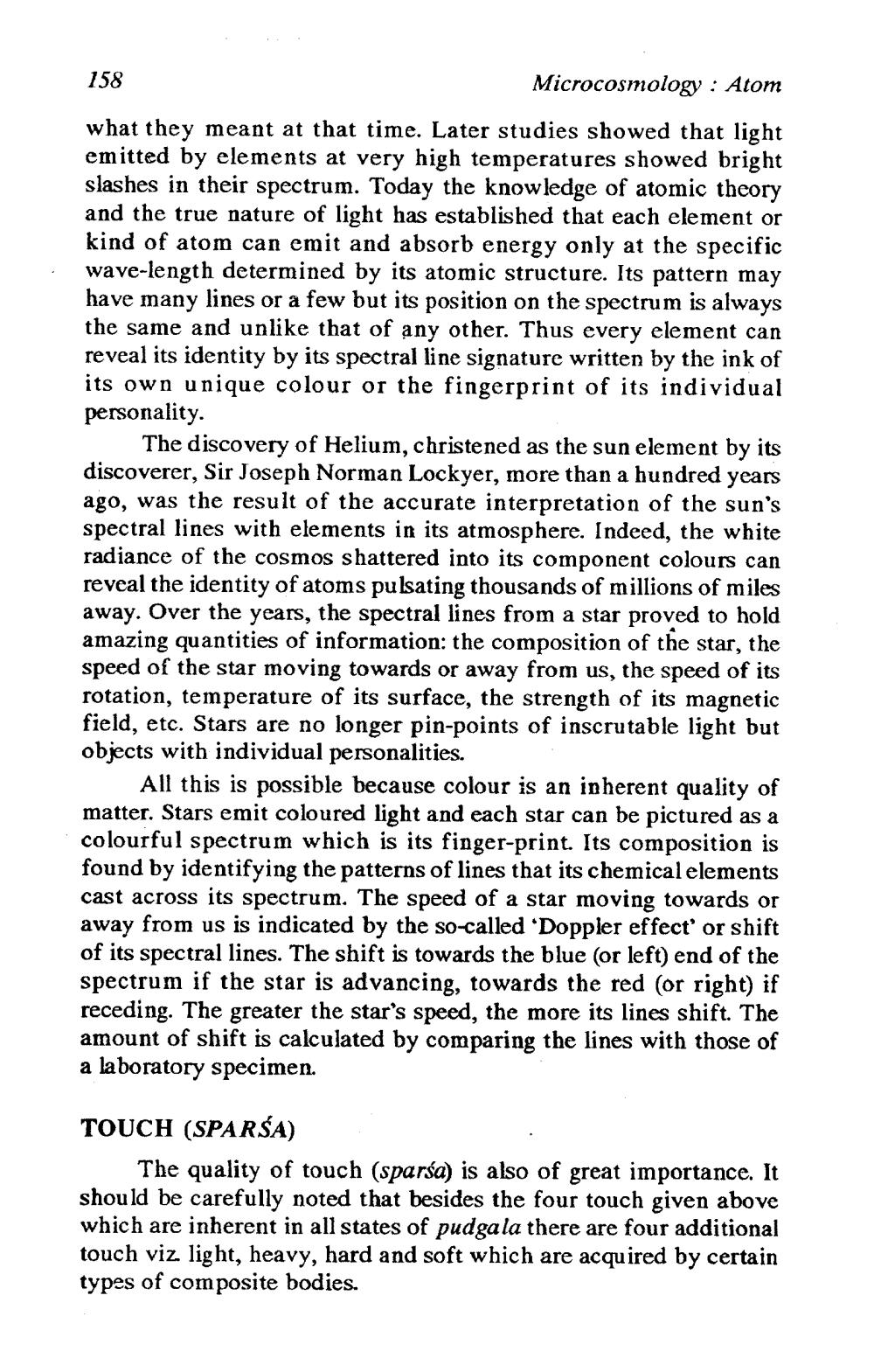________________
158
Microcosmology : Atom
what they meant at that time. Later studies showed that light emitted by elements at very high temperatures showed bright slashes in their spectrum. Today the knowledge of atomic theory and the true nature of light has established that each element or kind of atom can emit and absorb energy only at the specific wave-length determined by its atomic structure. Its pattern may have many lines or a few but its position on the spectrum is always the same and unlike that of any other. Thus every element can reveal its identity by its spectral line signature written by the ink of its own unique colour or the fingerprint of its individual personality.
The discovery of Helium, christened as the sun element by its discoverer, Sir Joseph Norman Lockyer, more than a hundred years ago, was the result of the accurate interpretation of the sun's spectral lines with elements in its atmosphere. Indeed, the white radiance of the cosmos shattered into its component colours can reveal the identity of atoms pulsating thousands of millions of miles away. Over the years, the spectral lines from a star proved to hold amazing quantities of information: the composition of the star, the speed of the star moving towards or away from us, the speed of its rotation, temperature of its surface, the strength of its magnetic field, etc. Stars are no longer pin-points of inscrutable light but objects with individual personalities.
All this is possible because colour is an inherent quality of matter. Stars emit coloured light and each star can be pictured as a colourful spectrum which is its finger-print. Its composition is found by identifying the patterns of lines that its chemical elements cast across its spectrum. The speed of a star moving towards or away from us is indicated by the so-called 'Doppler effect' or shift of its spectral lines. The shift is towards the blue (or left) end of the spectrum if the star is advancing, towards the red (or right) if receding. The greater the star's speed, the more its lines shift. The amount of shift is calculated by comparing the lines with those of a laboratory specimen.
TOUCH (SPARSA)
The quality of touch (sparsa) is also of great importance. It should be carefully noted that besides the four touch given above which are inherent in all states of pudgala there are four additional touch viz light, heavy, hard and soft which are acquired by certain types of composite bodies.




